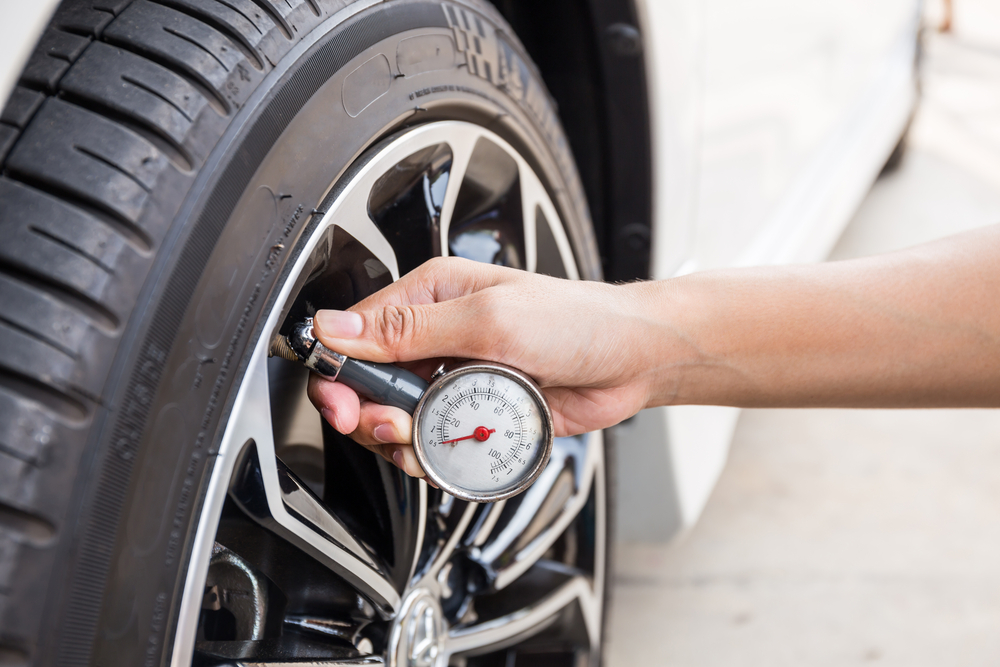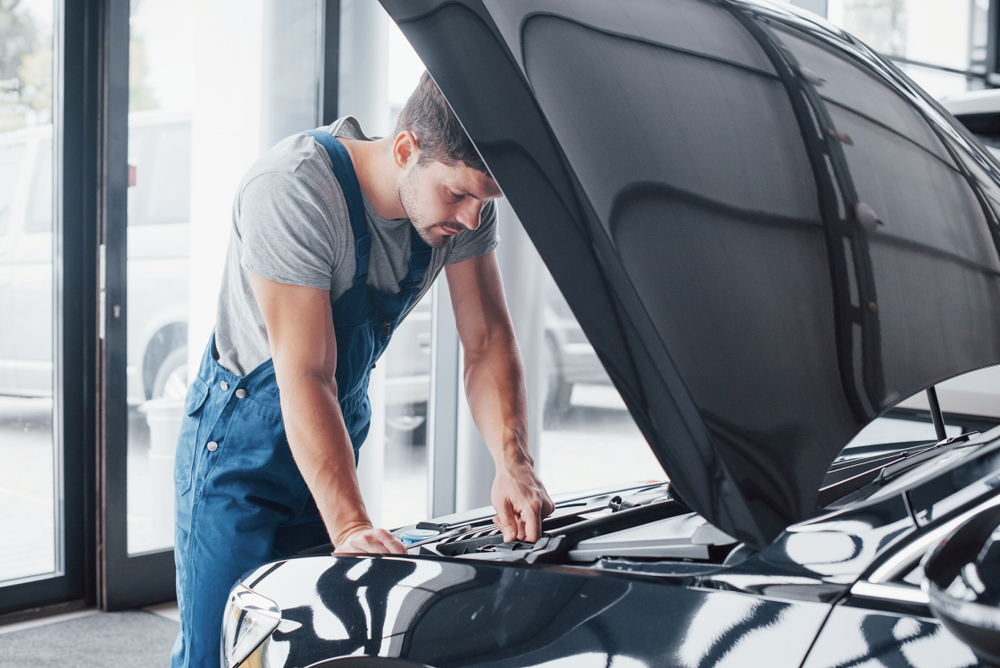Nobody wants their car to break down. That’s why routine car maintenance is so important. Sure, you might have an affordable Texas auto insurance policy and even a roadside assistance plan, but if you want to save the most time, money, and frustration, the best solution is to keep your car in good shape and invest in car maintenance.
In this article, we’ll explore five car maintenance tips and how you can check these items yourself on a regular basis.
Your Car’s Operating Manual Is the Key to Safe Car Maintenance
Many of the steps covered in this article will refer you to your car’s operating manual. If you’ve driven more than one car, you’ll understand why — different car manufacturers use different designs and configurations. Even something as basic as opening the gas cap can vary from car to car. When you’re not sure where to find something or what a warning light means, your car’s manual will guide you.
If you can’t find your car’s manual, try checking the manufacturer’s website to download an electronic copy. If you’re not sure of your car’s year, you can usually find that information on your auto insurance ID card or by checking your car’s vehicle identification number (VIN) typically found on the top left side of the dashboard.
How Do I Open My Car’s Hood?
Most car maintenance involves checking something under your car’s hood. So, before you get started, it’s important to understand how to properly open the hood.
Your car’s manual will indicate exactly where to find the hood release. Usually, it’s underneath the steering wheel near the door. Once you pull or push the lever, your hood should pop open. You’ll then need to pull another locking mechanism under the hood itself. This is a safety lever that keeps the hood from flying open while you’re driving. You can find the safety lever just above the car’s front grille.
Once open, secure the hood in the raised position with the installed hood prop. It’s generally located along the right side of the engine. It lifts up and inserts into a slot in the hood.
Finally, only use the hood prop provided by the car. If it’s broken, take the car to a mechanic to have it replaced. It’s not safe to use makeshift props like brooms to hold up the hood of your car.
Now that you’ve gotten the hood open and secure, it’s time to start with maintenance.
What are 5 Things to Check Regularly in Your Car (And How to Do It)?
1. Engine Oil
Under your car’s hood, there are countless gears, shafts, and pistons, all moving thousands of times per minute. Without proper lubrication, all of those sensitive moving parts would rust and grind together. This is what makes engine oil one of the most critical components in your car. Unfortunately, many Dallas drivers have a bad habit of not changing their oil often enough.
Engine oil needs to be clean to do its job properly. Over time, byproducts from engine combustion accumulate in your engine oil. If you don’t regularly change your oil, all that collected grime and sludge can decrease performance and damage your engine’s parts.
How to Check and Change Your Engine Oil
Every car has a dipstick under the hood — your car’s manual will tell you exactly where to find it. A dipstick is a long metal rod that goes down into the oil storage tank. Turn off your car and wait until the engine is cool to check the oil. Then, remove the dipstick and wipe it with a rag or cloth. Put the dipstick back into the tank, pull it out and inspect the tip of the dipstick. There should be marks on the dipstick indicating whether the oil level is too low (or too high).
While you’re checking the oil level, observe the color of the oil itself. Clean oil should appear amber or light brown. If the oil is dark brown or black, then it’s time for an oil change.
You should plan to change your oil every three months or 3,000 miles, whichever comes first. This means completely draining out the existing dirty oil and replacing it with fresh, clean oil. While it’s possible to do this yourself, most people prefer to take their car to a mechanic. Many Dallas auto shops and garages offer quick oil changes for a reasonable price.
2. Tires
Tires are the literal connection between your car and the road. Properly inflated and maintained tires will help maximize gas mileage, give you a smoother ride, and keep you safe in wet or wintry driving conditions. The two most important things to check regularly are your tires’ pressure and tread depth.
Your tire treads help grip the road when it’s dry and moves water away from the tire when it’s raining. Driving “bald” tires with worn-down treads is not only unsafe but also illegal in Texas.
It’s common for tire treads to wear unevenly. The treads may wear faster on the front tires, or they may wear faster on one side of the car. To get the most life out of your tires, it’s important to rotate them every 5,000 to 8,000 miles (or every two oil changes).
Maintaining the right tire pressure is also important. Underinflated tires cause premature wear and make your car harder to handle, while overinflated tires can lead to a bumpy ride and possibly a tire blowout.
Keep in mind that all tires eventually wear out. Even a tire hazard protection plan won’t cover normal wear and tear. The best solution is to do whatever you can to maximize the life of your tires.
How to Check and Change Your Tires
You can check your tire pressure using an inexpensive pressure gauge that you keep in your car. Most cars have a sticker on the driver door frame indicating the recommended tire pressure (usually 32 to 35 psi). Check your tires once a month and after your car has been parked for a few hours. If your tire pressure is low, you can inflate them at a nearby gas station.

Don’t rely on the pressure rating printed on the tire itself. This is the maximum pressure that the tire can hold and isn’t necessarily the ideal pressure for your specific car.
If your car’s tire pressure warning light came on, then you may need to manually reset the light once you’ve inflated your tires. Your car’s manual can show you how to do this.
One of the easiest and most popular ways to check your tire tread is with the penny test. Take a penny and place it upside down so that Lincoln’s head is toward the tire. If you can see the top of Lincoln’s head, then your tread is worn, and it’s time to replace your tires.
It isn’t difficult to change tires yourself, but most shops will offer to change them for you when you buy a new set of tires. They’ll also be able to dispose of your old tires.
3. Wheel Alignment
Ideally, your car’s wheels should rest flat on the ground and point forward when the steering wheel is centered. Unfortunately, Texas roads aren’t always ideal. Potholes, gravel, road debris, and rough surfaces are all factors that can cause your wheels to slowly become misaligned. Drivers also contribute to wheel misalignment when they hit the curb while parallel parking or are involved in a collision.
If you don’t regularly realign your wheels, you’ll eventually run into problems in the long term. Misaligned wheels have a negative effect on gas mileage. They’ll also cause uneven wear on your tires (see above). Finally, cars with misaligned wheels are harder to control, especially in winter weather. You may find that it’s harder to recover after a turn or that your car drifts to one side even when you’re steering straight.
How to Align Your Wheels
You can get your wheels aligned by a professional mechanic as a stand-alone service or as part of a tune-up. Most Dallas drivers should aim to get their wheels aligned every 6,000 miles, though you may want to do it more frequently if you drive on a lot of poorly maintained roads or do a lot of parallel parking. If your car is involved in any kind of accident or sudden impact, then you should get your wheels realigned as soon as possible.
4. Windshield Wipers
Your windshield wipers may not be as powerful or as sophisticated as your engine, but that doesn’t make them any less important. Even if your car is otherwise in top condition, old and damaged wiper blades can severely limit your visibility in bad weather, especially when driving at night. This greatly increases the chances of an accident.
How to Check and Replace Your Wiper Blades
Wiper blades are relatively easy to check and replace. If the blades are loud or rough or if they leave large sections of the windshield uncleaned, then gently wipe the blades with a household glass cleaner. If the problem continues or if you notice that the blades have missing chunks, then it’s time to replace them.
An expert at an auto parts store can help you find the right replacement blades based on your car’s make and model. To remove the old blades, your car’s manual will have step-by-step instructions. Usually, you’ll be able to slide off the old blades to the right (away from the wiper base) after pressing a latch located on the blade. Insert the new blades until you hear the latch click. Finally, test your new blades to make sure they’re the right size and that they’re attached to the wiper.
5. Washer Fluid
While you’re checking your wiper blades, be sure to top off your washer fluid too. While not as critical as some of the other components, washer fluid helps keep your windshield clean and free of dirt on dry, dusty days when your wipers wouldn’t work otherwise. Just think back to the last Texas spring day where everything was covered in pollen, and you’ll understand why you don’t want to unexpectedly run out of wiper fluid.
How to Check Your Washer Fluid
Fortunately, there’s no need for a professional to change your wiper fluid. All you need is a funnel and the right washer fluid. Your car’s instruction manual will indicate where to find the tank cap — it’s almost always somewhere under the hood. Be sure to use real washer fluid and not just water. This is because even pure water can breed mold and bacteria in the tank, clogging your system and posing a health risk.
Most modern cars have a dashboard indicator light that tells you when your washer fluid is low. Make it a habit to top off your wiper fluid every time you get an oil change — more often in the spring or if you use your washer fluid a lot.
Keep Your Car Maintained and Your Car Insurance Up To Date in Texas
While mechanics can help troubleshoot and fix big problems, the truth is that there are plenty of things you can do yourself to keep your car in top shape. By taking a few minutes to check on your car’s health, you can save yourself money in expensive emergency repairs later.
Baja Auto Insurance is all about helping you save money. We can also help you make sure you have the best and most affordable car insurance in Texas. All it takes is a few minutes for a free and fast online car insurance quote. Or you can visit one of our offices in person or give us a call at 800-401-6870.






Follow us: